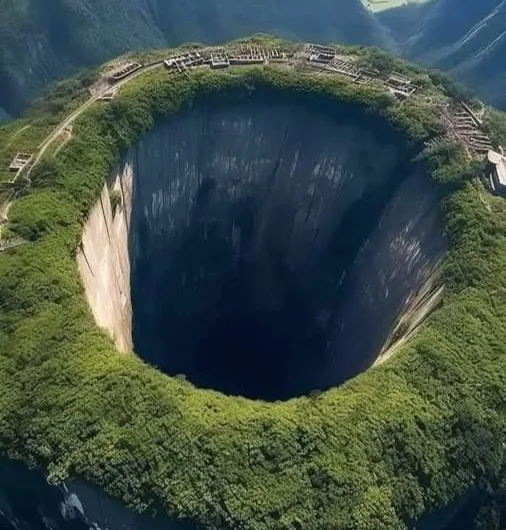
The Corinth Canal is a remarkable engineering feat in Greece, linking the Aegean and Ionian Seas. At 6.4 km long and just 21 meters wide, it was completed in 1893 after centuries of planning. The canal saves ships a 700-km detour around the Peloponnese, making it a must-see for both history and engineering enthusiasts.

The Corinth Canal: A Narrow Marvel of Greek Engineering
The Corinth Canal, a stunning feat of 19th-century engineering, slices through the Isthmus of Corinth in Greece, connecting the Aegean Sea (via the Gulf of Corinth) to the Ionian Sea (via the Saronic Gulf). Stretching 6.4 km (4 miles) long and only 21.4 meters (70 feet) wide at its base, this slender waterway, completed in 1893, shaves 700 km off maritime routes around the Peloponnese Peninsula. With sheer limestone walls soaring up to 90 meters (295 feet), the canal is a must-see for history buffs and engineering enthusiasts, blending ancient ambition with modern ingenuity.
Historical Context and Vision
The idea of a canal to bypass the treacherous 700-km journey around the Peloponnese dates back over two millennia:
Ancient Dreams: Periander, tyrant of Corinth (627–585 BCE), first proposed a canal but opted for the Diolkos, a stone-paved portage road to drag ships across the isthmus. Roman emperors like Julius Caesar, Caligula, and Nero revived the idea. In 67 CE, Nero employed 6,000 slaves to dig, moving 1.2 million cubic meters of earth, but the project stalled after his death.
Modern Revival: After Greece’s independence (1830), Prime Minister Ioannis Kapodistrias explored the concept, but costs deterred progress. The opening of the Suez Canal (1869) renewed interest, and in 1881, the Société Internationale du Canal Maritime de Corinthe, backed by French and Greek investors, began work under Hungarian engineers István Türr and Béla Gerster.
Completion: After financial setbacks and bankruptcies, the Greek government and engineer Angelos Sikelianos completed the canal in 1893, inaugurated by King George I on July 25. Total cost: 30 million gold francs (~$150 million in 2025 USD).
Engineering Feats and Challenges
Carving a 6.4-km channel through solid limestone was a monumental task:
Dimensions:
Length: 6.4 km, a straight cut from Isthmia (Ionian side) to Poseidonia (Aegean side).
Width: 21.4 m at the base, 24.6 m at sea level, too narrow for modern cargo ships but suitable for smaller vessels and yachts.
Depth: 8 m (26 feet), limiting use to ships with shallow drafts (up to 7 m).
Walls: Vertical limestone cliffs rise 52–90 m above sea level, creating a dramatic, near-vertical corridor.
Construction: Workers excavated 12 million cubic meters of rock using dynamite, steam-powered dredgers, and manual labor. Railways transported debris, and cofferdams controlled water ingress. Landslides, especially in 1888–1890, delayed progress, requiring constant reinforcement.
Bridges: Submersible bridges at both ends (e.g., Isthmia Bridge, built 1988) lower into the water to allow ships to pass, a rare engineering solution. Road and rail bridges overhead, like the Corinth Canal Bridge (2004), add modern flair.
Challenges: The canal’s narrow width and frequent rockfalls limited its commercial viability. Tidal currents (up to 2.5 knots) and crosswinds make navigation tricky, requiring skilled pilots.
Impact and Usage
The Corinth Canal transformed regional maritime travel but fell short of global economic expectations:
Time Savings: It cuts 700 km (or ~185 nautical miles) off voyages around the Peloponnese, saving 1–2 days for smaller ships traveling between Athens (Piraeus) and western Greece or Italy. A typical transit takes 1–2 hours at 6 knots.
Traffic: Designed for 19th-century steamships, the canal handles ~11,000 vessels annually (2023), mostly tourist boats, yachts, and small cruise ships (up to 22 m wide). Large freighters (e.g., Panamax ships, 32 m wide) cannot pass, limiting its role compared to the Suez or Panama Canals.
Economic Role: Tolls generate ~€3 million yearly (2024), but maintenance costs (e.g., clearing rockfalls) offset profits. The canal’s economic peak was the early 20th century, when it facilitated trade between the Ottoman Empire and Europe.
Closures: Landslides and earthquakes (common in Greece) frequently close the canal. A major rockfall in 2021 shut it for 18 months, reopening in June 2022 after €10 million in repairs. Seismic activity in 2024 prompted inspections, but it remains operational.
Tourism and Cultural Significance
Today, the Corinth Canal is a top tourist attraction, drawing 500,000 visitors yearly (2023) for its engineering marvel and scenic beauty:
Activities:
Canal Cruises: Boats like Corinth Canal Trips offer 1-hour tours from Isthmia or Loutraki (€15–25, 2025). Larger cruises (e.g., Celestyal Cruises) include transits in Peloponnese itineraries.
Bungee Jumping: Zulu Bungy operates jumps from the canal’s bridge (70 m high, €80–100), offering a 3-second freefall with limestone walls rushing by.
Viewpoints: Platforms near Isthmia and Corinth offer free panoramic views, ideal for photography, especially at sunset. The submersible bridge lowering is a crowd-pleaser.
Getting There:
From Athens: 80 km (1 hour drive) via E94 highway. Buses from Kifissos Station to Corinth (€9, 1.5 hours) connect to local taxis (€10 to canal). Trains to Corinth Station (1 hour, €8) require a 15-minute taxi ride.
From Loutraki: 10 km (15 minutes by car/taxi, €5–7). Guided tours from Athens or Nafplio cost €50–100, including Ancient Corinth.
Tips:
Visit April–October for mild weather (15–30°C, 59–86°F). July–August is crowded; early mornings (8–10 AM) avoid tour buses.
Wear sturdy shoes for viewpoints; paths are uneven. Bring water and sunscreen; no shade at the canal.
Check status at corinthcanal.com or local operators, as rockfalls can prompt sudden closures.
Nearby: Combine with Ancient Corinth (10 km, with Apollo’s Temple, €8 entry) or Acrocorinth fortress (15 km, free). Loutraki’s beaches and casino are 20 minutes away.
X posts capture its allure: “Corinth Canal looks like Earth was sliced with a laser—insane!” one user wrote in 2024. Another said, “Bungee jumping there was wild, but those walls are the real thrill.”
Engineering Legacy and Modern Relevance
The Corinth Canal, though less vital for global trade than envisioned, remains a landmark of human ambition:
Historical Feat: Completed before modern excavators, it showcased 19th-century engineering, inspiring projects like the Panama Canal (1914). Its vertical walls, cut without heavy machinery, rival modern precision.
Cultural Symbol: It embodies Greece’s maritime heritage, linking ancient seafaring (e.g., Corinth’s role in the Peloponnesian War) to modern tourism. The canal appears in films like The Bourne Identity (2002) and travel shows (Amazing Race, 2011).
Challenges: Its narrowness and maintenance costs limit commercial use, with only 4% of Greece’s maritime traffic passing through (2023). Proposals to widen it (to 30 m, est. €500 million) face environmental and funding hurdles.
Future: Climate change (rising sea levels, +0.5 m by 2050) and seismic risks threaten stability, but Greece’s Ministry of Infrastructure plans reinforcements by 2030. Tourism ensures its economic viability, with plans for a visitor center by 2027.
Why the Corinth Canal Matters
The Corinth Canal is more than a shortcut—it’s a testament to centuries of vision, from Nero’s slaves to Sikelianos’s dynamite. Its 6.4-km length, 21.4-m width, and 700-km savings for ships highlight engineering’s power to reshape geography. Though too narrow for supertankers, its dramatic cliffs and turquoise waters make it a bucket-list destination, blending history with adrenaline (bungee jumps) and serenity (cruises). As one X user put it, “Sailing through Corinth Canal feels like threading a needle through history.”
For engineers, it’s a case study in ambition versus practicality; for travelers, it’s Greece’s answer to the Grand Canyon—man-made yet timeless. Linking the Aegean and Ionian Seas, the canal bridges past and present, inviting all to marvel at its improbable existence.


